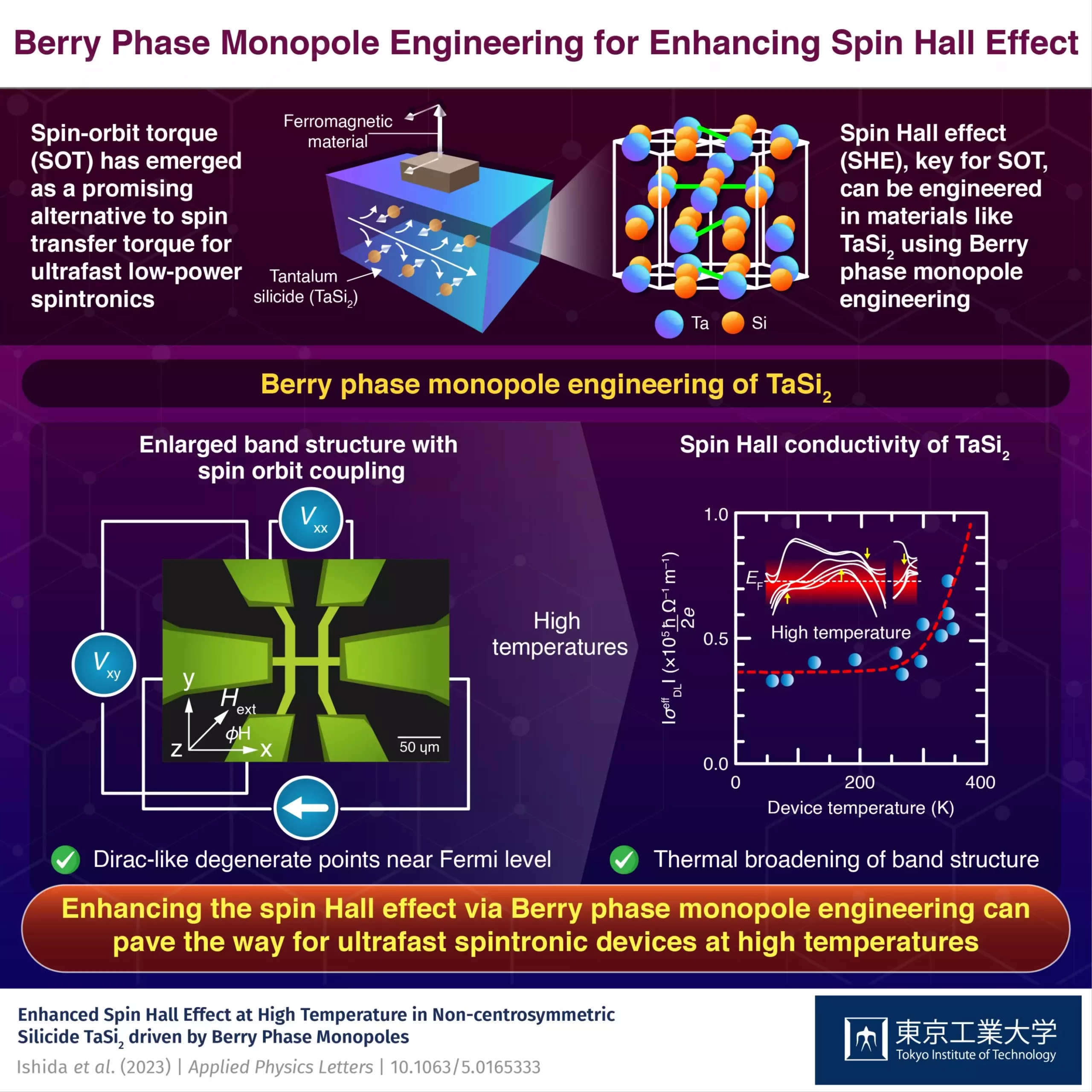Spintronic devices have revolutionized the field of electronics, offering high-speed processing and low-cost data storage. The spin of electrons plays a crucial role in enabling such devices, with spin-transfer torque being a key phenomenon. However, recent advancements in spin-orbit torque (SOT) have introduced new possibilities for spintronic devices. Research has shown that the spin Hall effect (SHE) in non-magnetic materials is essential for achieving SOT. Specifically, the presence of a “Dirac band” structure, characterized by hot spots for the Berry phase, is crucial in generating significant SHE. Tantalum silicide (TaSi2) has emerged as a material of interest due to its numerous Dirac points near the Fermi level. Researchers from the Tokyo Institute of Technology recently investigated the influence of Dirac band hot spots on the temperature dependence of SHE in TaSi2, shedding light on the potential of Berry phase monopole engineering.
The team of researchers led by Associate Professor Pham Nam Hai conducted experiments to understand how the SOT efficiency and SHE in TaSi2 vary with temperature. Surprisingly, they found that the SOT efficiency remained nearly constant between 62 K and 288 K, resembling the behavior observed in conventional heavy metals. However, beyond 288 K, both the SOT efficiency and SHE suddenly increased, almost doubling at 346 K. This behavior deviated significantly from that of conventional heavy metals and their alloys.
Further analysis by the researchers led them to attribute this sudden increase in SHE at high temperatures to Berry phase monopoles. These monopoles, formed due to the unique Dirac band structure of TaSi2, are responsible for enhancing the efficiency of SOT. By engineering these monopoles, it becomes possible to unlock the full potential of TaSi2 as a spintronic material. Dr. Hai highlights the significance of these findings, stating, “These results provide a strategy to enhance the SOT efficiency at high temperatures via Berry phase monopole engineering.”
The Promise of Berry Phase Monopole Engineering
The study conducted by the Tokyo Institute of Technology researchers sheds light on the potential of Berry phase monopole engineering in utilizing SHE in non-magnetic materials. It offers a new pathway for the development of high-temperature, ultrafast, and low-power spintronic devices. One specific application highlighted by Dr. Hai is the magneto-resistive random-access memory (MRAM), which can benefit from efficient high-temperature SOT. By harnessing the power of Berry phase monopoles, researchers have the opportunity to overcome existing limitations and push the boundaries of spintronic technology.
Spintronic devices hold immense promise for the future of electronics, enabling high-speed processing and low-cost data storage. However, the emergence of spin-orbit torque and the discovery of the spin Hall effect have opened up new avenues for innovation in the field. The Tokyo Institute of Technology researchers, through their investigation of the influence of Dirac band hot spots on SHE in TaSi2, have shown that Berry phase monopole engineering is a powerful strategy for enhancing SOT efficiency at high temperatures. By understanding and harnessing the unique properties of materials like TaSi2, we can unlock the full potential of spintronic devices and pave the way for exciting advancements in the field of electronics.



Leave a Reply